My RCA TK41C…one of the last 24 made
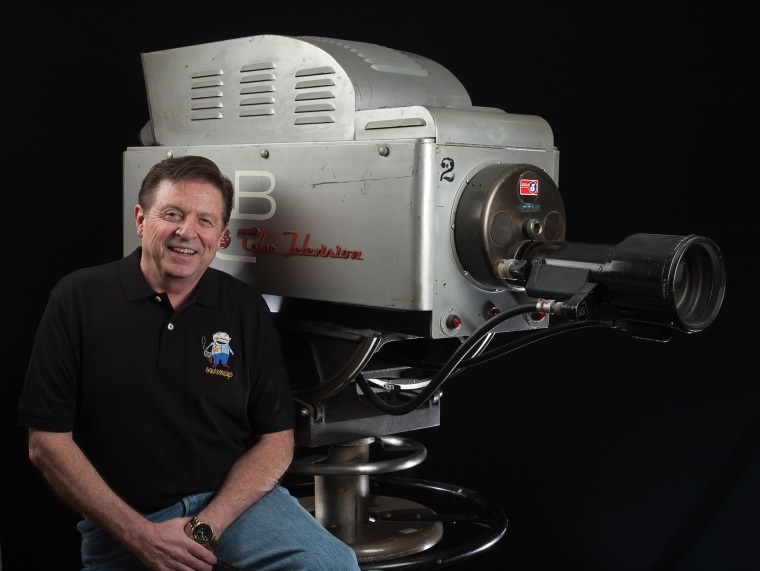
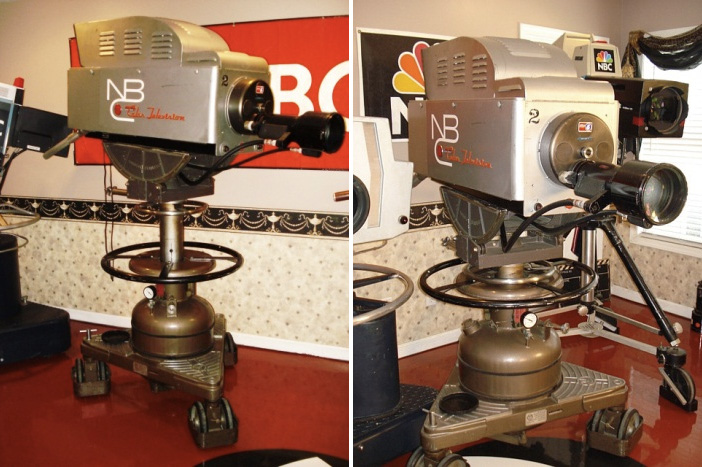
Meet “Rosie!” Rosie is an RCA TK41C and has a very interesting history. Here’s why:
1. Built in 1966 on special order, she was one of the very last RCA TK41s ever made.
2. She was special-ordered by KTLA to be their fourth TK41, joining the three Red Skelton RED-EO Video TK41s already in use.
3. She helped bring us a few Rose Bowl Parades.
4. She was quite likely owned by NBC Burbank.
5. She was the company mascot of The Broadcast Store in LA.
First, why Rosie? Well, she has a “Red” (Skelton) nose and she was a Rose Bowl “queen,” as the images on this page will help explain.
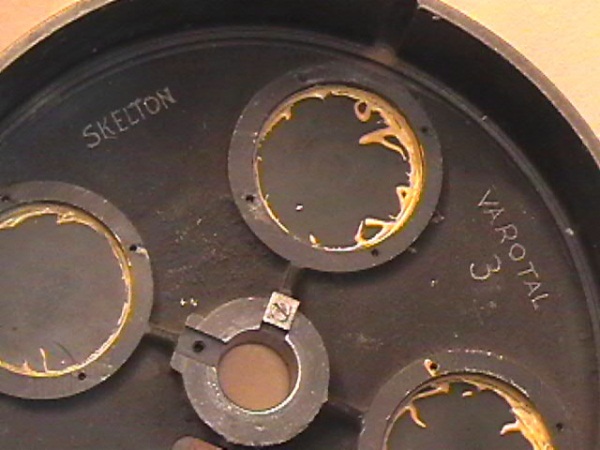
Above is a picture of the back of Rosie’s turret and inscribed in the metal is SKELTON and VAROTAL 3. Skelton is for Red Skelton’s ownership and the other is for the lens configuration to use with this camera. Below is a close up of the front of the turret, which still has a KTLA sticker on it.
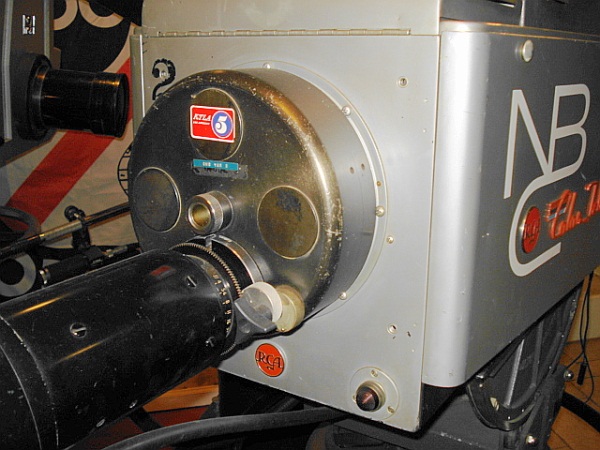
In 1964, RCA stopped production of the TK41 series camera, but broadcasters still wanted them. With Roone Arledge aboard, ABC’s sports division was taking off, and the network asked RCA to make 12 TK41s for its remote trucks. RCA had special orders for 12 more from production houses and local stations including KTLA, so in 1966 24 TK41s were built on a special run. My friend Steve Dichter was working at KTLA when Rosie arrived and has helped me confirm her 1966 arrival, and remembers the engineering staff knowing it was one of the last made. Our friend Lytle Hoover who was at RCA at the time has also verified that Rosie was indeed in the last batch made.
As you can read below, in 1960 Red Skelton started RED-EO-Tape, a video production company in Hollywood, with three state-of-the-art color mobile units equipped with three RCA TK41s. He was actually a pioneer; this was the very first color mobile unit on the west coast, and not even NBC had this capacity. Ampex, contracted to build these out, did so at Hollywood Coach Works. One unit was for camera switching, one for tape and the third unit was a shop on wheels complete with a metal lathe. This information is from the man who had to sign off on the project, Charlie Riley of Ampex. (Charlie was later a huge part of NBC’s video department and, later still, owner and founder of Logos Productions and Tele Color Video Productions.) Below is a detailed, three-page story from RCA Broadcast News magazine.
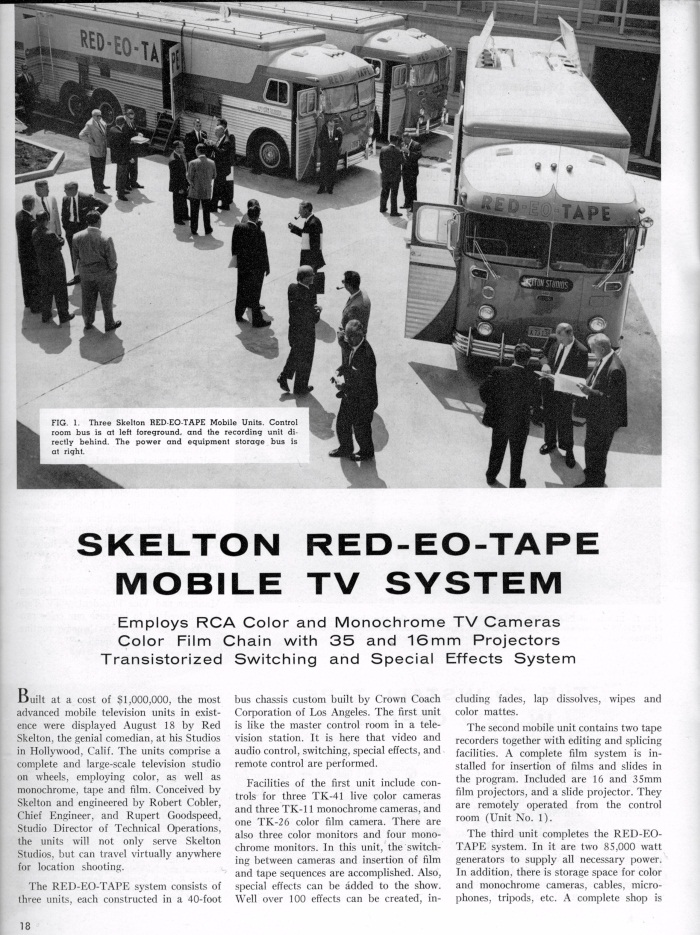
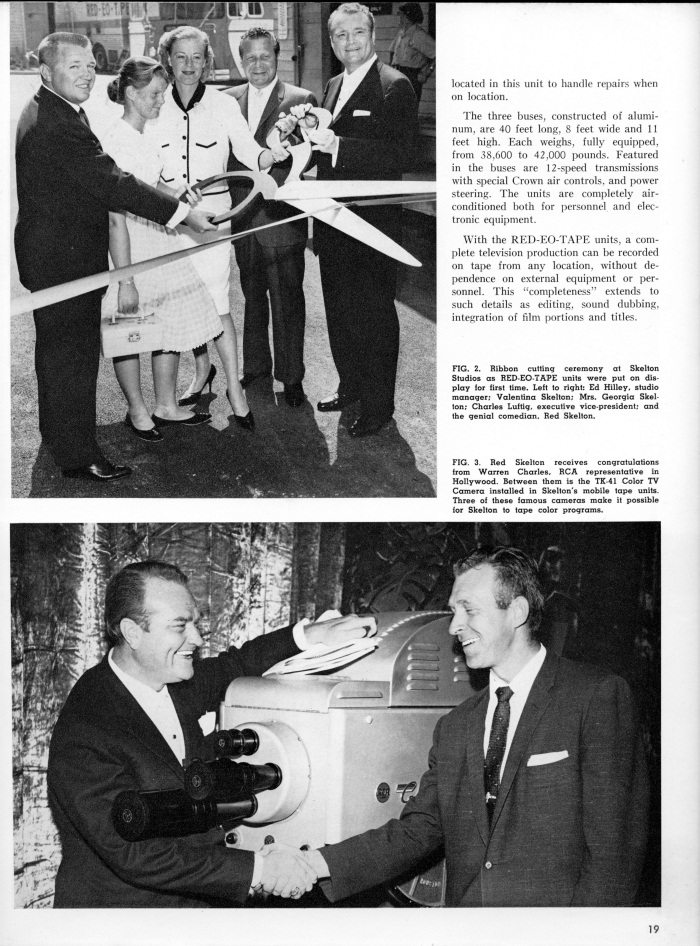

Below are the RED-EO Video trucks and cameras after they were sold to KTLA, circa 1965.
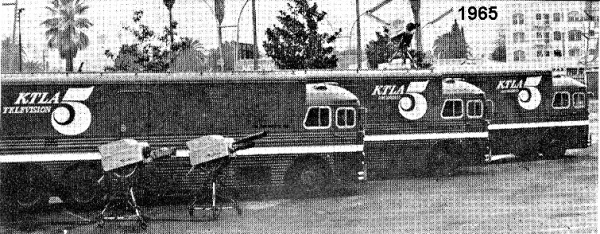
Red was a very smart guy and very well paid by CBS for his show. He was one of the first and few independent producers and did his show at his own facility on the old Charlie Chaplin lot in Hollywood, where KTLA and others also had studios. Skelton had become fascinated with the way he looked on color television and since CBS was still not doing much color origination, he began selling CBS his show in color. On the days they were not taping the Red Skelton Show, the theory was they would rent out the equipment for color production in Los Angeles and make big dollars on that, too. This did not work out, but Red still won on the deal.
CBS wanted more control of the Skelton show and the amount of money the network paid for it, so around 1962 CBS made a deal with Skelton that moved him to CBS Television City. As part of the deal, CBS bought RED-EO and used the units for studio and remote work for a year or so, before the whole three-unit ensemble was sold to KTLA in late 1964. KTLA put the cameras in its studios, but still did remote work with them too…sometimes on pedestals, as you will see further down the page.
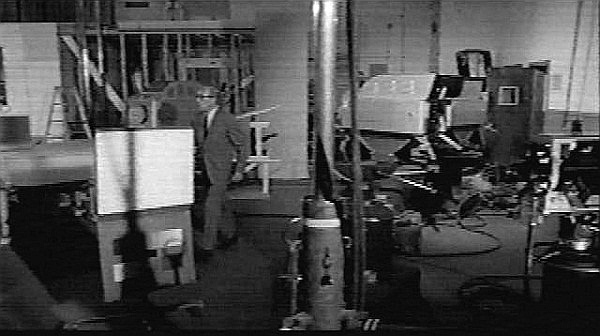
Remember the great Burt Lancaster/Kirk Douglas Cold War movie Seven Days In May? The top black and white image is a video capture from the movie showing the newly-purchased TK41Bs in a scene shot on Stage 6 at KTLA in 1964. The only other image of the TK41s in the KTLA studios is below, in another video capture from KTLA’s 20th Anniversary Special in 1967. There is a one in four chance it’s Rosie.
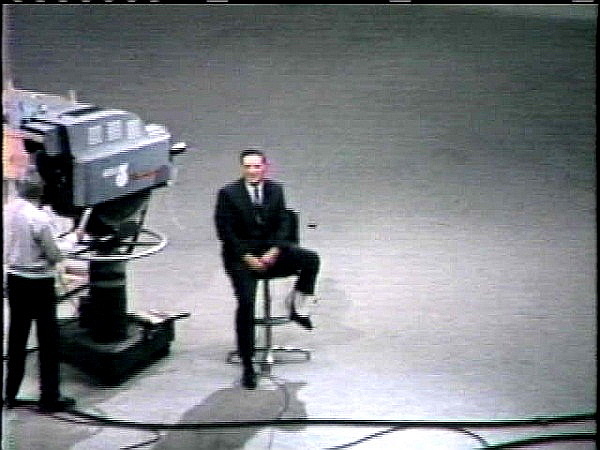
Below, we see a KTLA camera just behind Walt Disney at the 1966 opening day for the Anaheim Angels. Frankly, I am mystified why anyone would put at 300-pound TD-9 pedestal in a baseball dugout under a 350-pound camera, but…
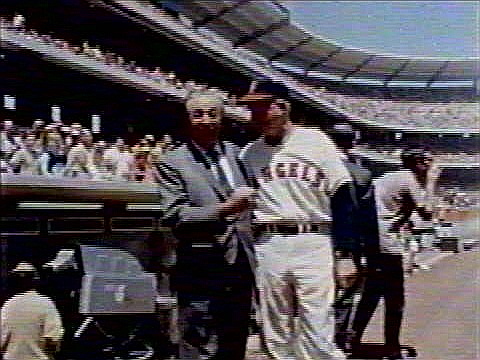
Here’s the text of the message that came with this image:
This video capture, from a very quick video sequence, shows Walt Disney and the Anaheim Angels’ manager on opening day of the 1966 season at Anaheim Stadium. A KTLA TK-41 can be seen in the lower left frame. You can notice the steering ring on the ped. I was working at KTLA at this time.
It was hell positioning those large cameras in tight places like the dugout. Sometimes on their studio peds and other times, such as in the tight confines of the announce booth, on a tripod. No fun in any case. We had 3 TK-41’s at the time of this photo. The 4th and final TK-41, one of RCA’s last produced, was received by KTLA later in 1966.
Steve Dichter
All three video captures were sent by Steve Dichter, who started at KTLA in 1965 and has been a great source of information for me. Many thanks to Steve, who has his own terrific website about television history.

Rosie’s three Skelton sisters were all TK41B models. Rosie was the only C. Over the years at CBS and KTLA, in all the ways camera parts get mixed together, Rosie wound up with the turret form one of the Skelton 41Bs and the cradle head that had held one of the 41Bs during their stint at CBS Television City. That’s why I have a very rare CBS property tag on the cradle head of my camera, as you can see above. Rare, in that CBS Television City did not have many TK41s. It is thought that CBS had about eight, at most. Three of them are now at History For Hire, and you can catch a glimpse of them here.
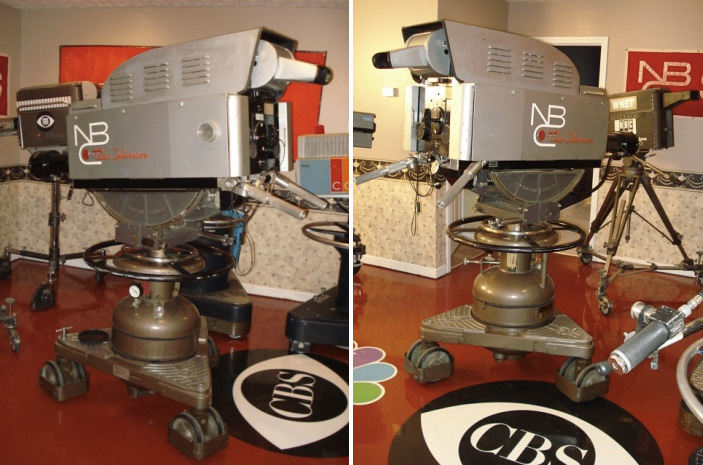
If you have ever watched a Rose Bowl Parade, you did it with help from KTLA. If you watched in 1966, you did so with help from Rosie. As the first station to do local color origination in Los Angeles, KTLA’s history is mostly that of an independent station instead of a network affiliate, but the station has always originated the parade coverage. For many years the networks paid KTLA for its coverage of the parade route, but the networks would put a few of their cameras at their parade anchor booths too. To viewers, it seemed that NBC or CBS was broadcasting the Rose Parade, when what they really did was add on to, and customize, their coverage with their stars as anchors and commentators, but while using the KTLA local parade route video feed.
Photo courtesy NBCU Photobank. All Rights Reserved. This image cannot be archived, sold, leased or shared.
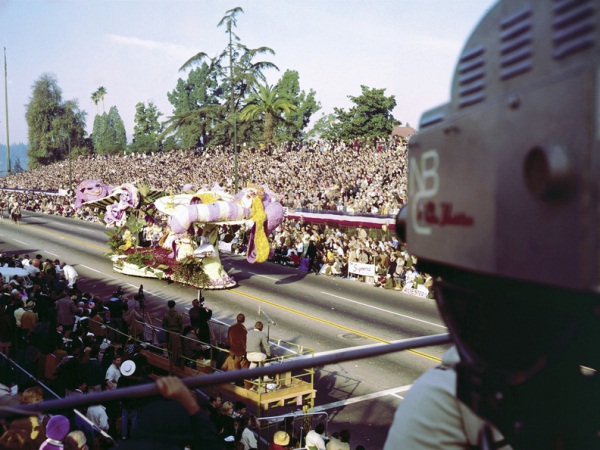
After KTLA switched to Norelco cameras, the TK41Bs were donated to California State University for use at their LA campus studios around 1968. Later Cal State gave the three Skelton cameras to UCLA, where they remain today, for its historical archives. The mobile units were sold to Mark Armasted Productions, a big production house in LA. No one is quite sure what happened to Rosie during all this, but I think it is highly likely she was sold to NBC Burbank. Here is why I think this is what happened to this practically brand new camera.
In September of 2006, I bought Rosie from Lou Claude, who owns The Broadcast Stores in New York and Los Angeles. It took me two months or more to convince Lou to part with her, because she was not just a piece of inventory. Rosie was the company “mascot” and lived in the lunch room of the LA store for 16 years. Below, you can see Rosie in her seven-foot-tall shipping crate as she arrived at my home after being flown from LA to Atlanta.
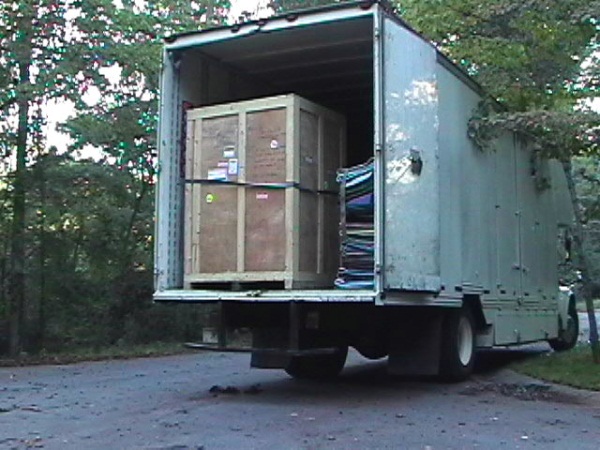
In 1990, Lou found her in the attic of an equipment store he bought out on Victory Boulevard in Burbank. All the equipment he found there was from NBC Burbank, including some other older black-and-white cameras. Given where she was found and that this camera was only two years old when it was retired by KTLA in ’68, I think it highly likely that Rosie was bought by NBC Burbank. Remember, too, KTLA could get a great price for a nearly new camera that was no longer being made.
Also, remember that the TK41 was still in wide use. Johnny Carson stuck with the TK41s until early 1971. A lot of the NBC sports trucks in the West and Midwest used them up until about 1973. ABC used TK41s until the mid-1970s on some of its sports trucks, and even had Monday Night Football backup trucks with 41s until as late as 1979. The first plumbicon cameras (from Norelco and RCA) did not have the same sharpness as the 41s,and that’s why NBC and ABC kept using them. NBC never bought any TK42s or 43s, and although the TK44A came out in 1968 and some went to Burbank, the bulk of NBC’s conversion to the TK44 came with the introduction of the 44B. These points add to my speculation that Rosie was bought and used at NBC.
It is obvious that Rosie was still in use in the studio or in the field until some time after January 1973, as evidenced by the note on the rear of the camera reminding cameramen to cap the camera before leaving.
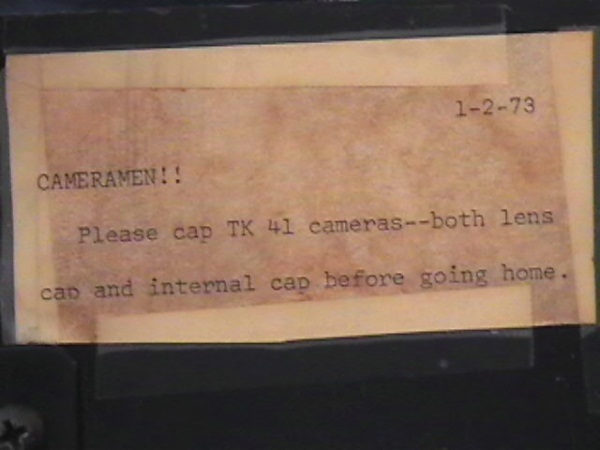
You can see the note just under the viewfinder hood in the top right of the control panel.
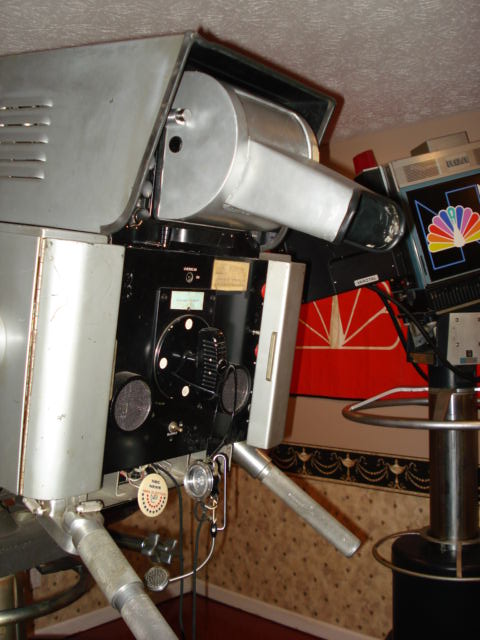
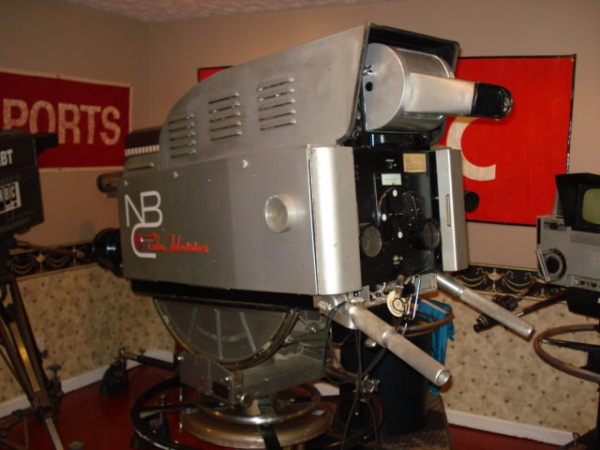
Above, notice the long side door. It is hinged underneath and opens down when the three push-screws as the top are unlatched. Also notice that the hot air exhaust vent is on the door, and that the door is full-length. This was only on the C models, as the A and B models had doors that stopped before the vent. The C vent is also different from the A and B exhaust vents, as the C models’ protrudes from the door where the others were recessed. That’s the one sure-fire way to distinguish a TK41C from the A and B models.
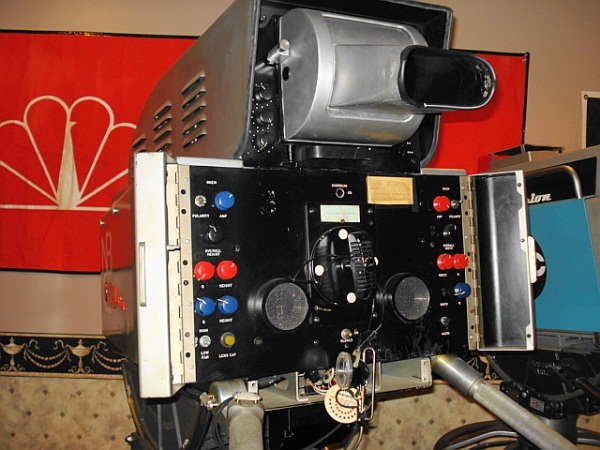
Below shows the back engineering doors open to reveal the camera adjustment features like Q and Skew controls, two fan controls, electronic lens capping, and more.